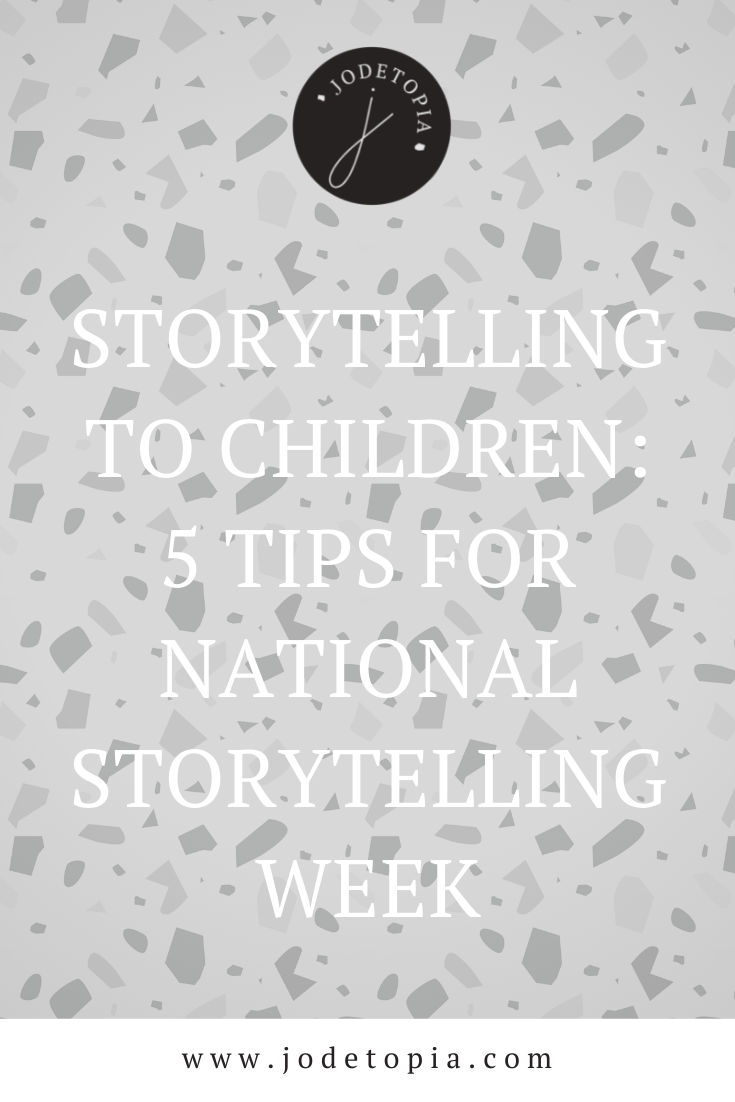

National Storytelling Week 2022 is 29th January to 5th February, and encourages people to get involved with storytelling, and reminds people of all ages of the beauty, art and joy of storytelling. Storytelling is not just about reading words put on paper, but about truly sharing the emotions and experiences being read, telling the story as if it were your own. Storytelling is very natural to us as human beings: from folklore to parents gossiping on the school run, the desire to tell a story is very present in every day life, yet the art of storytelling, especially storytelling to children, doesn’t always come naturally.
We all know how important it is to read to children, but this week, let’s focus on the importance of storytelling to children, too!
In celebration of National Storytelling Week 2022, I asked parents for their tips when Storytelling to children, in hope that these tips inspire you to improve your storytelling, and allow your family to truly immerse yourself in the joy of stories.
Laura from Autumn’s Mummy reminds us of the importance of using our voice to it’s full advantage, which I think is absolutely key when you’re talking about storytelling to children and keeping them engaged. She says: ‘Be enthusiastic and make stories fun! Reading stories with good use of expression makes such a difference to how they come across. Children pick up on this. If you feel like it, you could even give each character a different voice – the sillier the better!‘
Lauren from Outnumbered by Gymnasts reminds us of the importance of learning a story before telling it – a fundamental part of the art of storytelling. This very much differentiates between simply reading a book with your child vs storytelling to children. She says: ‘have a quick read of a new book yourself before reading it with your child, so it isn’t new to you. That way you’re already somewhat familiar with the plot, and and can ‘tell’ the story, rather than just ‘read’ it. Makes doing the voices, asking comprehension questions, and so on so much easier!‘
Read Next: How to claim your FREE baby books in England!
If you’re storytelling to children, the likelihood is that you’re using a book, such as a bedtime story book, as a prompt. Emma from Emma Reed reminds us of the importance in using visual aids to help engage our children. This can also be a great tool for their development and understanding. She says: ‘Encourage the child to look at the pictures to see what they can spot, which helps to engage them.’ Other visual aids you could use when storytelling to children could be relevant photographs or flashcards, or props such as puppets or teddies.
A great tip from Emma at Ready Freddie Go is to make storytelling to children interactive. She says: ‘I always try and ask some questions to make it a bit more fun”what do you think is going to happen next” “who is hiding there” etc to build a bit of excitement and help them digest what I have read‘
Last but not least, Emma from Fashion Mommy reminds us of a very simple, but crucial element of storytelling to children: sometimes it’s best to let THEM choose the story. She says: ‘I always used to select a few books so my son could make a choice and so be engaged. This also allows you to choose something of a right length to read before bedtime, rather than something the size of a phone book.’
Read Next: Children’s books about stars